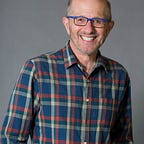Ten Women Photographers from 1900–1930 You Should Know
Note: This story was originally published on my old blog on March 18, 2017.
In honor of Women’s History Month, this is the second in a series of articles that shine a light on some of the many under-recognized and under-valued women photographers of the past. Sadly, there are way too many photographers who should have and no doubt would have been better known except for their gender. I know I won’t be able to list as many as should be recognized, but here are some from the first quarter of the 20th century that definitely deserve more attention.
Anne Brigman (1869–1950) was both a visual and written poet who is best known for her many photographs of nude men and women found intertwined with trees, rocks, and other landscape elements. One writer described her as being “a free spirit long before the phrase ‘free spirit’ became a cliché.” Her strong pictorial style attracted the attention of Alfred Stieglitz, who made her a member of the Photo-Session and published her photos three times in his famous journal Camera Work.
Claude Cahun (1894–1954) was a French artist, photographer, and writer who created highly staged self-portraits and tableaux that reflected the enigmatic Surrealist culture in Paris during the ’20s and ’30s. At once both mysterious and alluring, Cahun’s photography and writings seem to ask the viewers and readers of today the same question she posed at weekly salons in her Paris home: is who we appear to be the person we really are or do we all hide behind social and political masks?
Minya Diez-Dührkoop (1873–1929) was a German photographer who is best known for a series of images of dancers in bizarre Expressionist costumes. After working with her photographer father for many years, she ran a successful studio that became known for more intimate, informal portraits, which were very different from the stiff presentations favored by most photographers at the time.
Chansonetta Emmons (1858–1937) captured the beauty and dignity of small-town and rural family life in her photography. First in Maine where she grew up and later among African-American communities in South Carolina, she captured scenes that, as Berenice Abbott said, were seen by “an eye uncontaminated with fads, trends or cults.” Her photographs have been compared with the painting of Thomas Eakins for their straightforward portrayals of American life without any pretense.
Trude Fleischmann (1895–1990) began her photography career at the age of 25 when she opened her own studio in Vienna, Austria. She is known for her many studies of people, both clothed and unclothed, who made up the dazzling cultural life in Vienna. Later she moved to New York and brought her creative style to Vogue and other fashion magazines.
Laure Albin Guillot (1879–1962) photographed a wide variety of subjects from celebrities to landscapes to nudes. At the end of her career, her studio inventory included an astounding 52,000 negatives and 20,000 prints. While her style is remarkable regardless of the subject, it’s her work with what she called “micrography” that leaps off the page. Her photographs through a microscope reveal intricate patterns and dazzling abstractions that defied the formal modernism of their time.
Germaine Krull (1897–1985) began her career as a photographer in Germany, but her leftist political activism caused her to be expelled from Bavaria. After moving to Paris, she began experimenting with photomontage as a means of creative and political expression. In 1928 her book Métal was hailed by the New Vision movement for its stark images of giant mechanical structures. Later she was a war correspondent before settling with Tibetan refugees in northern India.
Adelaide Hanscom Leeson (1875–1931) was one of the first people to use photographs to illustrate a literary work. After setting up a successful photography studio in San Francisco in 1902, she and photographer Blanche Cummings created a series of images to illustrate the classic poem The Rubaiyat of Omar Khayyam. Three years later they published the first edition of The Rubaiyat, which contained beautiful photogravure prints laid in with the text. The book was so popular that several more editions were published, including a full-color version in 1914.
Margrethe Mather (1886–1952) was a very well-known early 20th-century photographer who influenced the work of Edward Weston. The two worked closely together for several years, but after Weston left for Mexico Mather joined the growing artistic and cultural circles in Los Angeles. Soon she was creating portraits of Pablo Casals, Rebecca West, and other celebrities of the time. Her photographic arrangements that featured bold patterns, strong decorative elements, and stark lighting became the hallmark for which her work is recognized today.
Jane Reece (1868–1961) was a widely exhibited photographer “who loved to create ‘carefully constructed little stories’ in her images.” During the first quarter of the 20th century she was one of the important regional photographers in America, and, although she didn’t live in a major city like New York or Los Angeles, she achieved an international reputation for her photographs. She is known for keeping her pictorial soft-focus style throughout her career even while her subjects evolved with more modern times.
Tim Greyhavens
